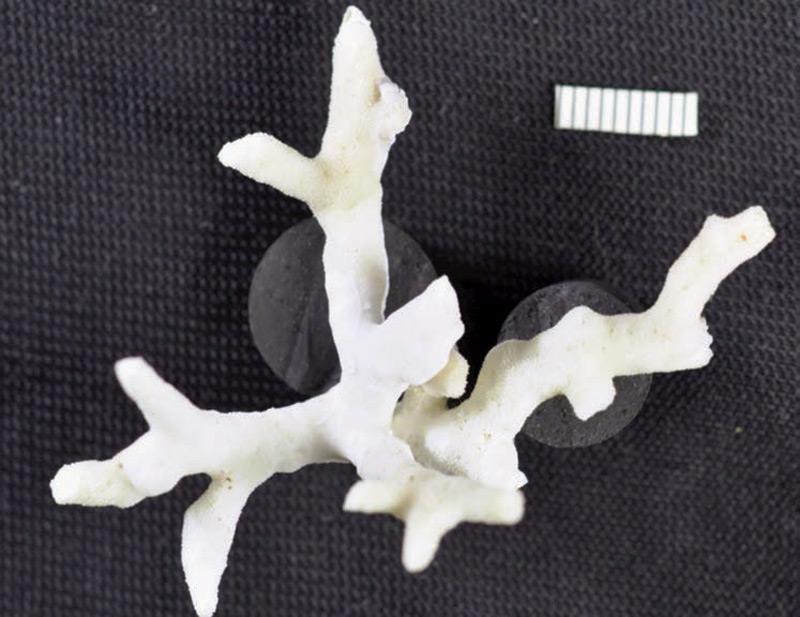Psammocora eldredgei is a new species of stony coral that is remarkable not for its size or appearance, but for how deep this Scleratinian was collected from. Most new species of stony corals are really rare, very odd, or come from very unusual habitats. Psammocora eldredgei falls into that latter category, having been collected only from deepwater reef banks of the Mariana Islands.
Interestingly, the collections of P. eldredgei were not made recently, but more than 500 samples were collected with various dredges with the first specimens catalogued dating back more than forty years. Being a small and diminutive coral with no living pictures to illustrate it, what makes the new Psammocora species very exciting is the depths from which it was collected.

The first samples of the new Psammocora were collected in the Mariana Island Archipelago at a depth of 89 meters in 1971, or nearly 300 feet, and that same year identical living specimens were brought up from 200 meters, or over 650 feet! Throughout this depth range the mesophotic Psammocora still harbored photosynthetic zooxanthellae, even in the specimens which came from over 200 meters deep.
The presence of zooxanthellae at such bone crushing and dark depths is remarkable considering that less than 1% of surface sunlight reaches beyond 330 feet down, depending on the turbidity. But like fish living in the deep sea, this coral has somehow managed to harness the power of photosynthesis using a fraction of light available at the surface.

Recent discoveries in mesophotic exploration has revealed a diversity of deep living stony corals that still harbor zooxanthellae, mostly in Leptoseris colonies found growing at 400 feet. This is not surprising considering that one species, Leptoseris troglodyta, has been found to be a cave-dwelling specialist, and new research has shown that Leptoseris skeletons are specially adapted to capture available light.
While Leptoseris and Psammocora are not necessarily closely related, they do have shallow skeletal features which bear a similarly fine microstructure. Perhaps future research might reveal that Psammocora skeletons are employing the same trickery to double dip into available light at those of some Leptoseris species.
Psammocora eldredgei consist primarily of small colonies of thin branch blusters between 2 and 4 mm in diameter and appears to be spread across a range of at least 600km in the Mariana Island Archipelago. The new Psammocora species is described in a special memorial volume of the Bishop Museum Bulletin in Zoology, in tribute to Lucius Eldredge, for whom the coral is named.



